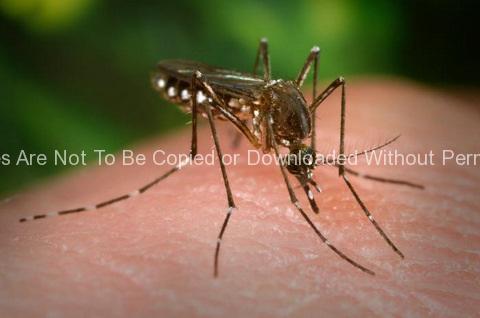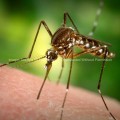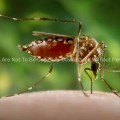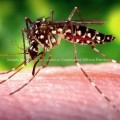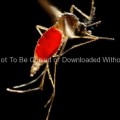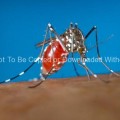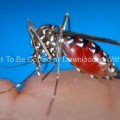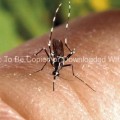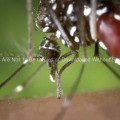This photograph depicted a female Aedes aegypti mosquito as she was in the process of seeking out a penetrable site on the skin surface of its host. As it would fill with blood, the abdomen would become distended, thereby, stretching the exterior exoskeletal surface, thereby, causing it to become transparent, and allowing the collecting blood to become visible as an enlarging red mass.
As the primary vector responsible for the transmission of the Flavivirus Dengue (DF), and Dengue hemorrhagic fever (DHF), the day-biting Aedes aegypti mosquito prefers to feed on its human hosts. Ae. aegypti also plays a major role as a vector for another Flavivirus, “Yellow fever”. Frequently found in its tropical environs, the white banded markings on the tarsal segments of its jointed legs, though distinguishing it as Ae. aegypti, are similar to some other mosquito species. Also note the lyre-shaped, silvery-white markings on its thoracic region as well, which is also a determining morphologic identifying characteristic.
